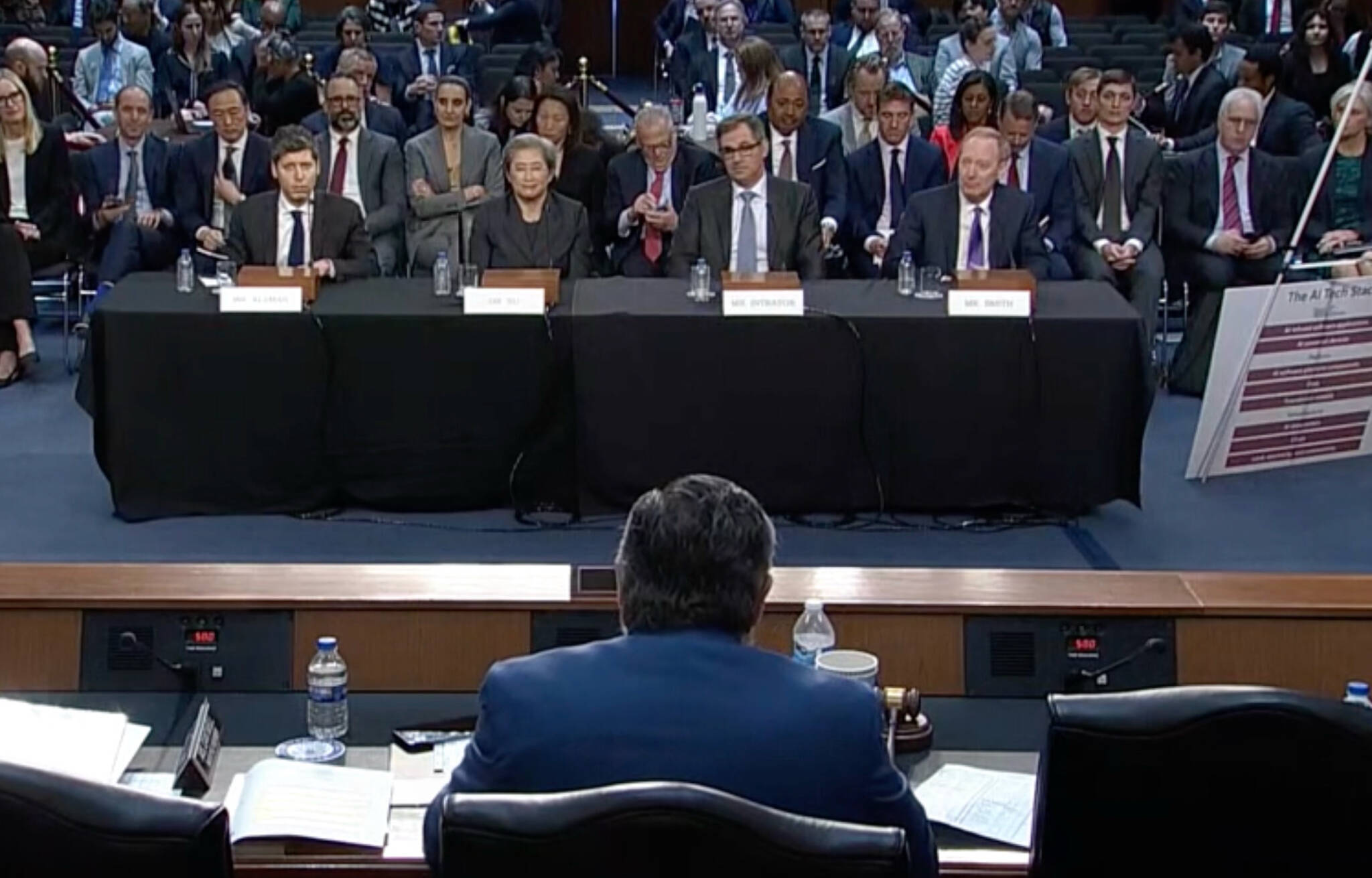5 leadership strategies to help teams thrive amid uncertainty
Uncertainty has become a defining feature of life today, a reality that challenges workplace leaders to adapt rapidly, make decisions with limited information, and foster stability amid constant and sometimes highly erratic change. At the same time, this uncertainty directly affects employees, making it incumbent upon leaders to provide the support and direction their teams need to successfully navigate an unpredictable world with both resilience and clarity. It goes without saying that the role of a leader has grown increasingly more complex, requiring us to instill stability, foster adaptability, and maintain focus without being overwhelmed by the relentless pace of change. In just the past month in America, we’ve witnessed the introduction, removal, and reintroduction of tariffs, massively disrupted supply chains, a whipsawing stock market (putting everyone’s retirement savings at risk), major companies mandating a return to office work, and the emergence of artificial intelligence technologies—innovations sparking equal parts excitement and fear as they reshape industries and raise questions about job security and the future of work. It’s a lot for all of us to deal with. Through my own leadership experience, I’ve learned that it’s absolutely pointless to try to control chaos—and far wiser to coach teams on how to thrive in spite of it. The following are five strategies I’ve used over the course of my career that workplace leaders can adopt to help their people negotiate complexity and perform at their best—regardless of what turbulence the universe throws our way: 1. Be a Rational Optimist In today’s world, it’s all too easy for pessimism to seep into our consciousness and negatively shape how we interact with those we lead. Being an abject pessimist, however, is entirely at odds with effective leadership, as it curtails productivity, stifles creativity, narrows perspective, and stands in the way of meaningful progress. Yet, while pessimism can directly undermine progress, leaning too far into optimism also carries its own risks. Effective leadership requires striking a balance—offering hope and inspiration while remaining realistic about the challenges ahead. In his book Same as Ever: A Guide to What Never Changes, New York Times bestselling author Morgan Housel makes this exact point by urging leaders to be “rational optimists.” He emphasizes that our role as leaders is to imbue a deep belief in people that difficult challenges can indeed be overcome, while also being very honest about the strong likelihood that they’ll face setbacks, surprises, and disappointments along the way. When people know to expect a rough road ahead, choosing hope over despair naturally opens the door to opportunities and more creative solutions. 2. Foster Team Connection and Belonging When teams face uncertain times, the belief that “everyone is in this together” is a powerful force for fostering unity, sustaining morale, and motivating employees to collaborate and support each other to overcome major challenges. This is why leaders who prioritize team connection create environments where individuals feel secure enough to navigate difficulties together. The goal is to cultivate a team culture where no one feels isolated and everyone is inspired to have each other’s back—truly embodying the spirit of “all for one and one for all.” Recent research shows that feelings of belonging are the glue that holds teams together, as well as being the cornerstone of employee well-being. For leaders, creating this sense of belonging requires nurturing deeper relationships with our employees and learning their concerns. It’s also about fostering an environment where differences are celebrated, inclusion is more than a buzzword, and every voice carries weight. Togetherness can be a great source of strength. 3. Proactively Build Team Resilience Long before crises or unexpected setbacks arise, leaders must not only remind employees that risk is an inherent aspect of every business. They must equip them to respond emotionally, to even the smallest hurdles, with confidence and resilience. As Nassim Taleb, the author of bestselling books on randomness and complexity, wisely advises, leaders should “prioritize preparation over prediction,” focusing on flexibility and readiness rather than relying on forecasts that are often uncertain or incomplete. One way to achieve this is by regularly engaging employees in “what if” discussions—posing questions like, “How would we respond if this situation happened?” Additionally, empowering teams to collaboratively brainstorm solutions to everyday challenges on their own will help build their adaptability and creativity muscles, so they are ready when needed. Finally, workplace leaders must cultivate their own self-mastery during challenging times. Learning how to maintain composure, reframe setbacks as opportunities, and display optimism in the wors

Uncertainty has become a defining feature of life today, a reality that challenges workplace leaders to adapt rapidly, make decisions with limited information, and foster stability amid constant and sometimes highly erratic change.
At the same time, this uncertainty directly affects employees, making it incumbent upon leaders to provide the support and direction their teams need to successfully navigate an unpredictable world with both resilience and clarity.
It goes without saying that the role of a leader has grown increasingly more complex, requiring us to instill stability, foster adaptability, and maintain focus without being overwhelmed by the relentless pace of change.
In just the past month in America, we’ve witnessed the introduction, removal, and reintroduction of tariffs, massively disrupted supply chains, a whipsawing stock market (putting everyone’s retirement savings at risk), major companies mandating a return to office work, and the emergence of artificial intelligence technologies—innovations sparking equal parts excitement and fear as they reshape industries and raise questions about job security and the future of work.
It’s a lot for all of us to deal with.
Through my own leadership experience, I’ve learned that it’s absolutely pointless to try to control chaos—and far wiser to coach teams on how to thrive in spite of it. The following are five strategies I’ve used over the course of my career that workplace leaders can adopt to help their people negotiate complexity and perform at their best—regardless of what turbulence the universe throws our way:
1. Be a Rational Optimist
In today’s world, it’s all too easy for pessimism to seep into our consciousness and negatively shape how we interact with those we lead. Being an abject pessimist, however, is entirely at odds with effective leadership, as it curtails productivity, stifles creativity, narrows perspective, and stands in the way of meaningful progress.
Yet, while pessimism can directly undermine progress, leaning too far into optimism also carries its own risks. Effective leadership requires striking a balance—offering hope and inspiration while remaining realistic about the challenges ahead.
In his book Same as Ever: A Guide to What Never Changes, New York Times bestselling author Morgan Housel makes this exact point by urging leaders to be “rational optimists.” He emphasizes that our role as leaders is to imbue a deep belief in people that difficult challenges can indeed be overcome, while also being very honest about the strong likelihood that they’ll face setbacks, surprises, and disappointments along the way.
When people know to expect a rough road ahead, choosing hope over despair naturally opens the door to opportunities and more creative solutions.
2. Foster Team Connection and Belonging
When teams face uncertain times, the belief that “everyone is in this together” is a powerful force for fostering unity, sustaining morale, and motivating employees to collaborate and support each other to overcome major challenges. This is why leaders who prioritize team connection create environments where individuals feel secure enough to navigate difficulties together.
The goal is to cultivate a team culture where no one feels isolated and everyone is inspired to have each other’s back—truly embodying the spirit of “all for one and one for all.” Recent research shows that feelings of belonging are the glue that holds teams together, as well as being the cornerstone of employee well-being.
For leaders, creating this sense of belonging requires nurturing deeper relationships with our employees and learning their concerns. It’s also about fostering an environment where differences are celebrated, inclusion is more than a buzzword, and every voice carries weight. Togetherness can be a great source of strength.
3. Proactively Build Team Resilience
Long before crises or unexpected setbacks arise, leaders must not only remind employees that risk is an inherent aspect of every business. They must equip them to respond emotionally, to even the smallest hurdles, with confidence and resilience. As Nassim Taleb, the author of bestselling books on randomness and complexity, wisely advises, leaders should “prioritize preparation over prediction,” focusing on flexibility and readiness rather than relying on forecasts that are often uncertain or incomplete.
One way to achieve this is by regularly engaging employees in “what if” discussions—posing questions like, “How would we respond if this situation happened?” Additionally, empowering teams to collaboratively brainstorm solutions to everyday challenges on their own will help build their adaptability and creativity muscles, so they are ready when needed.
Finally, workplace leaders must cultivate their own self-mastery during challenging times. Learning how to maintain composure, reframe setbacks as opportunities, and display optimism in the worst of times is a collective skill set that demands diligent effort and commitment to develop. In the end, leaders must model the behavior they’ll expect from their team.
4. Influence Through Stories, Less Through Data
In Same as Ever, Morgan Housel clarifies that humans are wired for stories, not spreadsheets. Highlighting how storytelling creates clarity and sparks action, he explains, “We don’t think in terms of odds and probabilities; we think in terms of narratives.” Unlike raw data or abstract concepts, stories resonate deeply because they are inherently relatable and emotionally engaging.
Imagine a CEO who’s suddenly faced with a market downturn. Instead of bombarding employees with forecasts and financial metrics, telling stories about times in the past when their company was faced with great difficulties—and triumphed—is a transformative way of framing the current challenge as being equally surmountable.
According to Housel, “We live in a world where people are bored, impatient, emotional and need complicated things distilled into easy-to-grasp scenes.” So, craft stories that make the unknown feel conquerable, and watch them resonate with your teams.
5. Set Reasonable Expectations
When unforeseen disruptions occur, projects often veer off schedule, and teams fall behind on critical targets. These setbacks are pivotal moments for leadership, as the urge to quickly regain momentum can place employees in an untenable position, feeling as if they’re fighting against the universe.
In these circumstances, wise leaders display patience and avoid placing undue pressure on their teams by setting unrealistic goals. Instead, they emphasize that while external factors may be uncontrollable, effort is always within their influence—even in the absence of guarantees. In the 1970s, Disney’s stock dropped 70%. Walt Disney responded by setting modest internal goals, assuring employees that he believed the company would recover through steady, determined action. His measured approach proved to foster resilience across the organization.
Navigating rough seas
In times of turbulence, the teams that will thrive are those who work cohesively, maintain an optimistic yet pragmatic outlook (acknowledging that big challenges may not have simple solutions, but can be conquered), and are trained to pivot rather than freeze when circumstances seem most dire. And, while we might wish for life to be easier and our objectives more readily attainable, we should also always remember that “a smooth sea never made a skilled sailor.”






















































-Reviewer-Photo-SOURCE-Julian-Chokkattu-(no-border).jpg)




















































































































![[The AI Show Episode 146]: Rise of “AI-First” Companies, AI Job Disruption, GPT-4o Update Gets Rolled Back, How Big Consulting Firms Use AI, and Meta AI App](https://www.marketingaiinstitute.com/hubfs/ep%20146%20cover.png)






























































































































![Life in Startup Pivot Hell with Ex-Microsoft Lonewolf Engineer Sam Crombie [Podcast #171]](https://cdn.hashnode.com/res/hashnode/image/upload/v1746753508177/0cd57f66-fdb0-4972-b285-1443a7db39fc.png?#)




























































.jpg?width=1920&height=1920&fit=bounds&quality=70&format=jpg&auto=webp#)



















































-Nintendo-Switch-2-Hands-On-Preview-Mario-Kart-World-Impressions-&-More!-00-10-30.png?width=1920&height=1920&fit=bounds&quality=70&format=jpg&auto=webp#)




























_Andrey_Khokhlov_Alamy.jpg?width=1280&auto=webp&quality=80&disable=upscale#)














































































































![New iPad 11 (A16) On Sale for Just $277.78! [Lowest Price Ever]](https://www.iclarified.com/images/news/97273/97273/97273-640.jpg)

![Apple Foldable iPhone to Feature New Display Tech, 19% Thinner Panel [Rumor]](https://www.iclarified.com/images/news/97271/97271/97271-640.jpg)
![Apple Developing New Chips for Smart Glasses, Macs, AI Servers [Report]](https://www.iclarified.com/images/news/97269/97269/97269-640.jpg)


































































![[Weekly funding roundup May 3-9] VC inflow into Indian startups touches new high](https://images.yourstory.com/cs/2/220356402d6d11e9aa979329348d4c3e/WeeklyFundingRoundupNewLogo1-1739546168054.jpg)






























